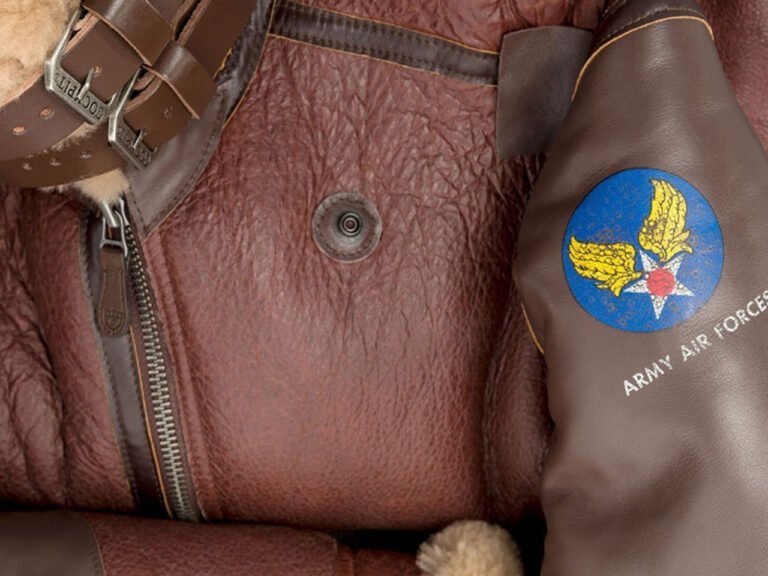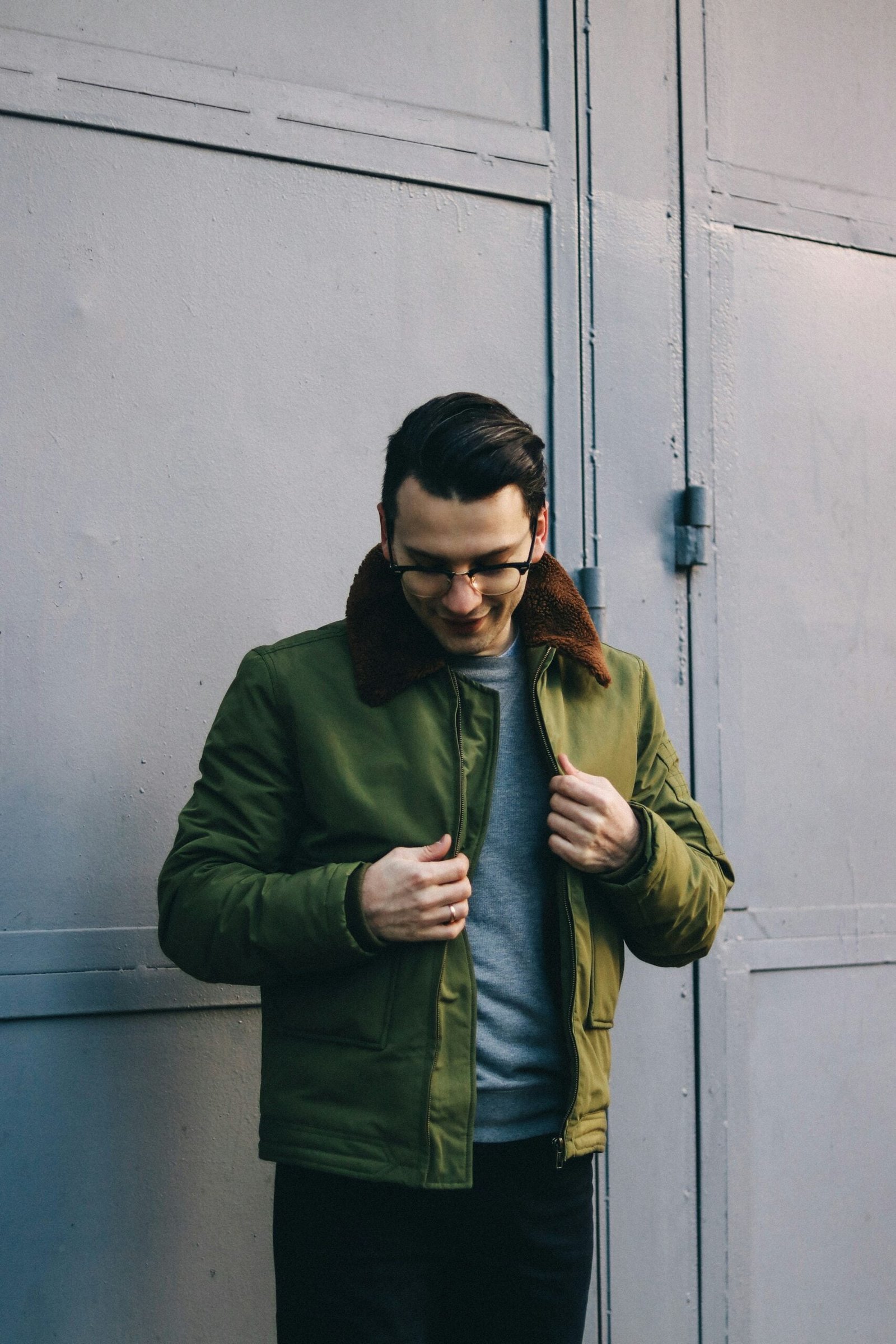How to Make a Shearling Jacket ?
Introduction to Shearling Jackets
Shearling jackets are a timeless piece of outerwear known for their exceptional warmth, durability, and luxurious feel. Originating from sheepskin, shearling is the material derived from a lamb or sheep hide that has been tanned with the wool still attached. This creates a unique fabric that is both insulating and breathable, making it ideal for cold weather. Historically, shearling jackets have been worn by aviators, military personnel, and outdoor enthusiasts, but they have since become a staple in contemporary fashion.
The appeal of shearling jackets lies in their distinct characteristics. The wool side of shearling provides a soft, plush texture that offers natural insulation, while the suede side adds a rugged, yet refined aesthetic. This combination ensures that shearling jackets are not only functional but also exude a sense of luxury and style. Different styles of shearling jackets, such as the classic bomber, moto jacket, and aviator, cater to various fashion tastes and occasions, making them versatile additions to any wardrobe.
In terms of materials, the quality of the shearling used greatly impacts the overall finish of the jacket. Premium shearling is often sourced from regions known for their superior livestock, ensuring a finer, more consistent texture. The meticulous process of turning raw sheepskin into wearable shearling involves several steps, including tanning, shearing, and finishing, all of which contribute to the jacket’s final appearance and performance.
Making a shearling jacket is an intricate process that involves multiple stages, each requiring attention to detail and craftsmanship. In this guide, we will walk you through the main steps involved in creating a shearling jacket, from selecting the right materials to cutting, sewing, and finishing the garment. By understanding these steps, you will gain a deeper appreciation for the craftsmanship behind these iconic jackets and learn how to create your own piece of timeless outerwear.

Gathering Materials and Tools
Creating a shearling jacket requires a meticulous selection of materials and tools, each contributing to the garment’s durability and luxurious feel. The primary material is, of course, shearling hides. These hides, which feature the wool still attached to the leather, provide the unique combination of warmth and texture that defines shearling jackets. It’s crucial to source high-quality shearling hides, which can often be found through specialized leather suppliers or reputable online marketplaces. Look for hides that are evenly tanned, free from defects, and have a consistent wool thickness.
In addition to the shearling hides, you’ll need a variety of supplementary materials. High-quality leather sewing needles are essential, as they are designed to penetrate thick materials without breaking. Pair these with heavy-duty thread, which offers the necessary strength to hold the jacket together under stress. A sewing machine capable of handling thick materials is also indispensable; industrial-grade machines are ideal, though some heavy-duty home machines may suffice.
Cutting tools are another critical component of your toolkit. A rotary cutter can provide precise, clean cuts, but heavy-duty scissors are also a reliable option. These tools will help you shape the shearling hides accurately, ensuring each piece fits together seamlessly. Additionally, you’ll need materials for closures and finishing touches, such as zippers, buttons, or lining fabric. These elements not only enhance the jacket’s functionality but also contribute to its aesthetic appeal.
The importance of selecting the right quality materials cannot be overstated. Superior materials ensure the finished shearling jacket is not only durable but also exudes the luxury and comfort that make shearling garments so desirable. Investing in the best possible materials will pay dividends in the longevity and overall quality of your handcrafted jacket.
Pattern Making and Cutting
The process of making a shearling jacket begins with creating a precise pattern. This pattern serves as the blueprint for your jacket, ensuring all pieces fit together seamlessly. For those looking to draft a customized pattern, accurate measurements are crucial. Begin by measuring the chest, waist, hips, arms, and length of the person who will wear the jacket. These measurements are essential to tailor the jacket to fit perfectly.
If drafting a pattern from scratch feels daunting, pre-made patterns are widely available. These patterns come in various sizes and styles, providing a solid foundation for your project. Whether you choose a pre-made pattern or draft your own, adjustments may be necessary to accommodate different body shapes and sizes. Mark any alterations clearly on the pattern to avoid confusion later.
Once your pattern is finalized, the next step is laying out the shearling hide. Shearling is a unique material, combining a soft wool side with a durable leather side, which requires careful handling. Place the pattern pieces on the hide, ensuring efficient use of the material. Lay the wool side down to avoid damaging the fur during cutting. Use weights or pins to secure the pattern pieces in place, making sure they do not shift during the cutting process.
Cutting shearling requires precision and patience. A sharp rotary cutter or heavy-duty scissors are recommended for clean edges. Follow the pattern lines meticulously, as any deviation can affect the fit and appearance of the jacket. Pay special attention to the direction of the fur, ensuring it flows uniformly across all pieces. This consistency is vital for the jacket’s aesthetic and comfort.
In addition to accuracy, handling shearling material demands care to prevent mistakes. Avoid stretching or pulling the hide, as this can distort the pieces. Instead, cut with smooth, even strokes, letting the weight of the tool guide the process.
Assembling and Finishing the Jacket
Assembling a shearling jacket requires meticulous attention to detail and patience. Begin by laying out all the cut pieces in their respective positions. Shearling, being a bulky material, demands specific sewing techniques to ensure a professional finish. Use a heavy-duty sewing machine equipped with a leather needle for best results.
When sewing shearling, it’s crucial to manage its thickness. Trim the wool at the seam allowances to reduce bulkiness, ensuring a smoother stitching process. Pin or use clips to hold the pieces together, avoiding the use of regular pins which could leave permanent marks. Sew with a longer stitch length to accommodate the material’s density, and reinforce the seams with a second line of stitching for added durability.
Adding components such as zippers, pockets, and linings requires precision. For zippers, use a zipper foot and be sure to sew it in place carefully to prevent misalignment.When adding a lining, opt for a smooth, lightweight fabric to maintain comfort without adding unnecessary bulk.
Finishing touches are essential for a polished look. Trim excess material from the seams and edges, and consider topstitching along the seams for a refined appearance. Edge finishing can involve folding the raw edges inward and stitching them down, or using binding tape for a cleaner look.
Proper care and maintenance will extend the life of your shearling jacket. Regularly brush the wool to keep it fluffy and free from dirt. If the jacket becomes stained, spot clean using a damp cloth and mild detergent, avoiding soaking the leather. Store the jacket in a cool, dry place, and use a padded hanger to maintain its shape. With proper assembly and care, your shearling jacket will not only look professional but also stand the test of time.





